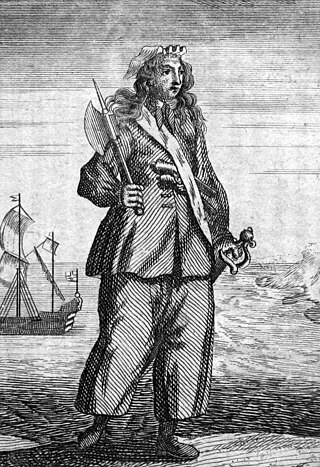
Around the World in Eighty Days is an adventure novel by the French writer Jules Verne, first published in French in 1872. In the story, Phileas Fogg of London and his newly employed French valet Passepartout attempt to circumnavigate the world in 80 days on a wager of £20,000 set by his friends at the Reform Club. It is one of Verne's most acclaimed works.

Sinbad the Sailor is a fictional mariner and the hero of a story-cycle. He is described as hailing from Baghdad during the early Abbasid Caliphate. In the course of seven voyages throughout the seas east of Africa and south of Asia, he has fantastic adventures in magical realms, encountering monsters and witnessing supernatural phenomena.

The Bay of Kotor, also known as the Boka, is a winding bay of the Adriatic Sea in southwestern Montenegro and the region of Montenegro concentrated around the bay. It is also the southernmost part of the historical region of Dalmatia. At the entrance to the Bay there is Prevlaka, a small peninsula in southern Croatia. The bay has been inhabited since antiquity. Its well-preserved medieval towns of Kotor, Risan, Tivat, Perast, Prčanj and Herceg Novi, along with their natural surroundings, are major tourist attractions. The Natural and Culturo-Historical Region of Kotor was designated a UNESCO World Heritage Site in 1979. Its numerous Orthodox and Catholic churches and monasteries attract numerous religious pilgrims and other visitors.

Mary Read, was an English pirate. She and Anne Bonny were among the few female pirates during the "Golden Age of Piracy".

Emilio Salgari was an Italian writer of action adventure swashbucklers and a pioneer of science fiction.

Tarzan of the Apes is a 1912 novel by American writer Edgar Rice Burroughs, and the first in the Tarzan series. The story was first printed in the pulp magazine The All-Story in October 1912 before being released as a novel in June 1914.

Captain Horatio Hornblower is a 1951 British naval swashbuckling war film in Technicolor from Warner Bros., produced by Gerry Mitchell, directed by Raoul Walsh, that stars Gregory Peck, Virginia Mayo, Robert Beatty and Terence Morgan.

Around the World in 80 Days is a 1956 American epic adventure-comedy film starring David Niven, Cantinflas, Robert Newton and Shirley MacLaine, produced by the Michael Todd Company and released by United Artists.

The Son of Kong is a 1933 American Pre-Code adventure monster film produced by RKO Pictures. Directed by Ernest Schoedsack and featuring special effects by Willis O'Brien and Buzz Gibson, the film stars Robert Armstrong, Helen Mack and Frank Reicher. The film is the sequel to King Kong, being released just nine months after and is the second entry of the King Kong franchise.

The Red Poppy or sometimes The Red Flower is a ballet in three acts and eight tableaux with an apotheosis, with a score written by Reinhold Glière and libretto by Mikhail Kurilko. This ballet was created in 1927 as the first Soviet ballet with a modern revolutionary theme. Possibly the most famous dance from this ballet is the Sailors Dance, sometimes referred to as the "Russian Sailors Dance". It is this musical selection for which Glière is perhaps best known. There have been four main versions of The Red Poppy.

SS Michelangelo was an Italian ocean liner built in 1965 for Italian Line by Ansaldo Shipyards, Genoa. She was one of the last ships to be built primarily for liner service across the North Atlantic. Her sister ship was the SS Raffaello.

Iguana is a 1988 American adventure crime film directed by Monte Hellman and starring Everett McGill in the main role. It is based on the novel by Spanish author Alberto Vázquez-Figueroa, itself based on the life of a real Irish sailor called Patrick Watkins. The film was mainly shot on location in Lanzarote. Monte Hellman won Bastone Bianco Award for this movie on the Venice Film Festival in 1988. Iguana premiered in theaters on April 1, 1988, and was released on DVD on January 30, 2001, via Anchor Bay Entertainment. The film ends with the titles "For Warren" as Hellman dedicated the film to his friend Warren Oates.

Prčanj is a small town along the Bay of Kotor, Montenegro. According to the 2011 census, the town has a population of 1128 people.

Marcel Fernández Pérez, better known as just Marcel Perez, was an internationally celebrated Spanish-born creator and star of more than 200 silent comedy short subjects. He directed himself in nearly two-thirds of these films, acting, on two continents under such names as Marcel Fabre, Michel Fabre, Fernandea Perez, Manuel Fernández Pérez, Robinet, Tweedy, Tweedledum, and Twede-Dan.

Ferdinando "Nando" Gazzolo was an Italian actor and voice actor.

A period of Albanian piracy occurred from the 15th to the 19th centuries, during which Albanian pirates plundered and raided ships. These pirates were based mainly in Ulcinj, but were also found in Bar and Ragusa, and had connections with North Africa.
This is a list of Italian television related events from 1977.

Veille d'armes is a 1935 French drama film directed by Marcel L'Herbier and starring Annabella and Victor Francen.

Barbie & Chelsea: The Lost Birthday is a 2021 animated adventure comedy television film directed by Cassandra "Cassi Simonds" Mackay and written by the Ann Austen and Nathaniel "Nate" Federman from a story by Charlotte Fullerton.

Voyages très extraordinaires de Saturnin Farandoul is a science-fiction novel by Albert Robida.





















